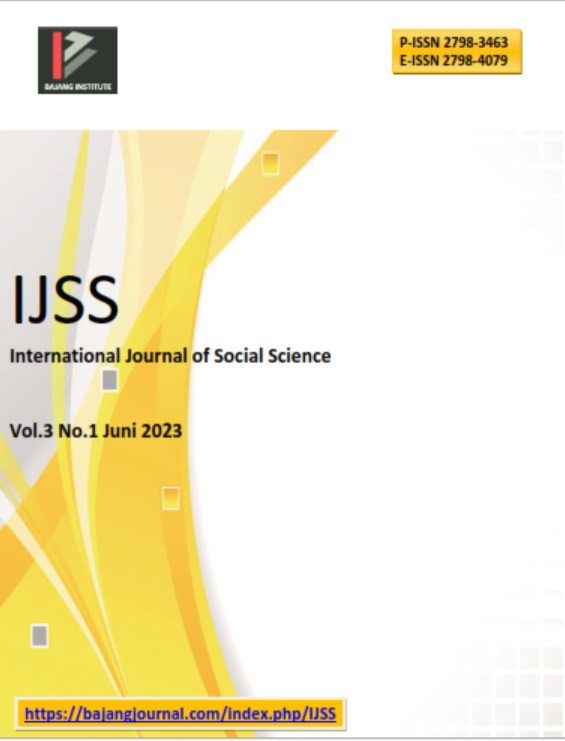THE INFLUENCE OF OCCUPATIONAL SAFETY SOCIALIZATION ON REDUCING THE INCIDENCE OF WORK ACCIDENTS AT THE KLARI KARAWANG COMMUNITY HEALTH CENTER
DOI:
https://doi.org/10.53625/ijss.v3i1.8740Keywords:
Work Accidents, Occupational Safety, Awareness Programs, Community Health Centers, Healthcare Workers' Awareness, Safety PoliciesAbstract
Work accidents in healthcare facilities, such as community health centers (Puskesmas), pose a serious problem that affects the safety and well-being of healthcare workers. This study aims to evaluate the impact of occupational safety awareness programs on reducing the incidence of work accidents at Puskesmas Klari, Karawang. The research uses a quantitative approach with an analytical survey design, involving 50 healthcare workers as respondents using a total sampling technique. Data were collected through validated and reliable questionnaires and analysed using logistic regression to determine the impact of safety awareness on the occurrence of work accidents. The results show that safety awareness programs significantly influence the increase in healthcare workers' awareness, which is followed by a decrease in work accident rates. The "Aware" group saw a 30% increase in awareness after training, and this group experienced a 20% reduction in work accident incidents. The "Somewhat Aware" group also showed a 15% increase in awareness and a 20% decrease in incidents. However, the "Unaware" and "No Response" groups demonstrated lower improvements in awareness and reductions in incidents, with increases of only 5% and 10%, respectively. This indicates that the current awareness programs are still not fully effective for groups with low awareness or those who are apathetic. The conclusion of this study is that comprehensive and continuous occupational safety awareness programs can increase awareness and reduce the incidence of work accidents at Puskesmas Klari. However, developing more varied training programs tailored to the specific needs of healthcare workers is necessary to achieve optimal effectiveness. Evidence-based and participatory safety policies also need to be implemented to strengthen workplace safety practices. This study provides significant contributions to developing occupational safety policies in healthcare facilities in Indonesia
References
Azwar, S. (2017). Reliability and Validity. Yogyakarta: Student Library.
Karawang District Health Service. (2023). Karawang District Health Service Annual Report. Karawang: Karawang District Health Service.
Ministry of Health of the Republic of Indonesia. (2022). Guidelines for Occupational Health in Health Service Facilities. Jakarta: Ministry of Health of the Republic of Indonesia.
Murti, B. (2018). Principles and Methods of Epidemiological Research. Yogyakarta: Gadjah Mada University Press. 5. Notoatmodjo, S. (2018). Health Promotion and Behavioral Science. Jakarta: Rineka Cipta.
Pramono, B. (2021). Occupational Safety and Health in Health Service Facilities: Study at Community Health Centers. Dissertation, Gadjah Mada University, Yogyakarta.
Satibi. (2016). Occupational Safety and Health Management in Hospitals. Yogyakarta: Gadjah Mada University Press.
Sastroasmoro, S., & Ismael, S. (2014). Basics of Clinical Research Methodology. Jakarta: Sagung Seto.
Setiawan, R. (2020). Public Health Research Data Collection Techniques. Bandung: Alphabeta.
Simanjuntak, R. (2019). Work Safety in Health Service Facilities. Journal of Occupational Safety and Health, 10(1), 45-56.
Supriyanto, S., & Ernawati, D. (2010). Health Services Management. Jakarta: University of Indonesia (UI) Press.
Sularso, D. (2020). Evaluation of Work Safety in Health Service Facilities. Indonesian Journal of Health Administration, 5(1), 34-45.
Triwibowo, D. (2019). Implementation of Occupational Safety and Health Policies in Hospitals. Surabaya: Airlangga University Press.
Wulandari, P., & Suryadi, R. (2018). The Influence of Work Safety on Employee Performance in Hospitals. Journal of Management and Occupational Health, 7(2), 75-82.
Yuwono, T., & Harahap, N. (2019). Effectiveness of Occupational Safety Training in Reducing Occupational Accident Rates in Health Facilities. Journal of Public Health, 11(3), 102-110.
Zulkarnain, I., & Anggraini, D. (2020). Participatory Approach in Developing Occupational Safety Programs at Community Health Centers. Indonesian Journal of Occupational Safety and Health, 8(1), 56-63.
Green, L. W., & Kreuter, M. W. (2005). Health Program Planning: An Educational and Ecological Approach. New York: McGraw-Hill.
Creswell, J. W. (2014). Research Design: Qualitative, Quantitative, and Mixed Methods Approaches. Thousand Oaks, CA: SAGE Publications.
Glanz, K., Rimer, B. K., & Viswanath, K. (2008). Health Behavior and Health Education: Theory, Research, and Practice. San Francisco: Jossey-Bass.
Yin, R. K. (2018). Case Study Research and Applications: Design and Methods. Thousand Oaks, CA: SAGE Publications.
Downloads
Published
How to Cite
Issue
Section
License
Copyright (c) 2023 Jumaedi Jumaedi, Chaerani Tri Yuliana, Wieke Widhiantika, Yasin Azhari, Muhidin Muhidin, Wendi Darmawan

This work is licensed under a Creative Commons Attribution 4.0 International License.

















